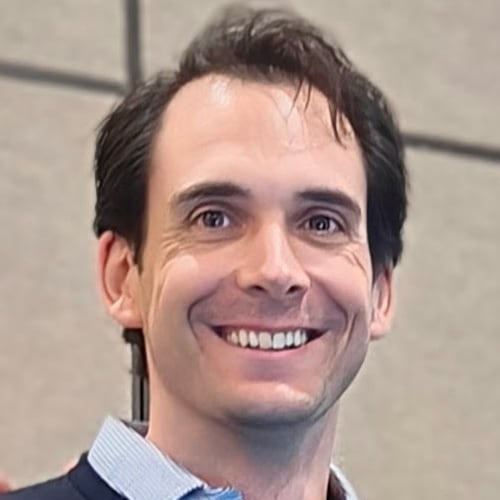What animal is your software and other important questions for Spacio and Parametric Solutions!
A fascinating conversation on The Future of Design Tools, AI and Human Creativity, The Impact on Collaboration and Balancing New Tools with Existing Workflows.

We had a fascinating conversation between Sofia from Parametric Solutions and Stian from Spacio at our recent event, diving deep into the evolution of software in architecture and engineering.
Here are some key takeaways:
Web vs. Desktop: The Future of Design Tools
Stian kicked off the discussion with a bold statement: “Sharing scripts is impossible – you’ve got to make software.” He highlighted a big trend in the industry: the shift to web-based platforms. While web apps offer faster feedback loops and quicker fixes, they also bring up important questions about data security and ownership.
Sofia emphasized how this shift impacts architects and engineers: “For an architect, it’s super important to maintain control over the creative process.” She explained that while the web provides exciting possibilities for collaboration and speed it comes with its set of challenges as well.
Both Stian and Sofia underlined that the big difference is the speed of development and iteration. Architects and engineers should expect more from the web based tools they use when it comes to responsiveness from the companies developing them.
AI and Human Creativity: Finding the Balance
When asked what part of the design process should be driven by AI versus human architects, Stian and Sofia agreed that AI can handle repetitive tasks, but creativity should remain in human hands. As Sofia put it: “We shouldn’t give the creativity away. Let the computer do what it does best, and us humans can take control of the creative part.” Sofia commented that different actors want different levels of design generation. An architect might want to design and then get the design documentation and details generated based on her idea, while a municipality might want a number of different designs generated in order to evaluate what to approve on a plot of land.
The Impact on Collaboration
Sofia also pointed out how the rise of new software and tech developments is changing the dynamics between real estate developers, architects, engineers, contractors, and software developers. With early data provisioning and the ability to test various solutions quickly, these tools are reshaping how we collaborate and build. All actors want more control of the process and at times this comes at the cost of the control of others. We need to think about how we collaborate better rather than who controls what part of the process.
Balancing New Tools with Existing Workflows
As Stian noted, architects and engineers today face the challenge of learning new software while still working with established tools. He advocated that people don't spend years mastering a software, if it can't be learned quickly then the interface is not good enough. The key is finding software with a logical interface that’s intuitive enough to jump into while offering powerful capabilities that save hours of “stupid work.” Keep it on one layer and make it context aware instead of hiding functionality in layers and layers of dept.
We had lot's of good questions from the audience, so much so that we had to do a cut off of the Q&A. The final question from the audience was a fun one:
What Animal is Your Software?
Dimitar got up in the audience and asked; If your software was an animal, what would it be?

Hektar by Parametric Solutions would be a turtle with a shell of "zones". It is steady and works with a slow-moving process of real estate development.

Spacio would be a cheetah: fast and agile, delivering speed and efficiency in building design.
The conversation left us with much to think about as we continue to navigate the future of AEC software. A huge thanks to Sofia and Stian for sharing their insights and to everyone who joined us at the event! Let’s keep pushing the boundaries of what’s possible in design and construction.
We look forward to the next one!













